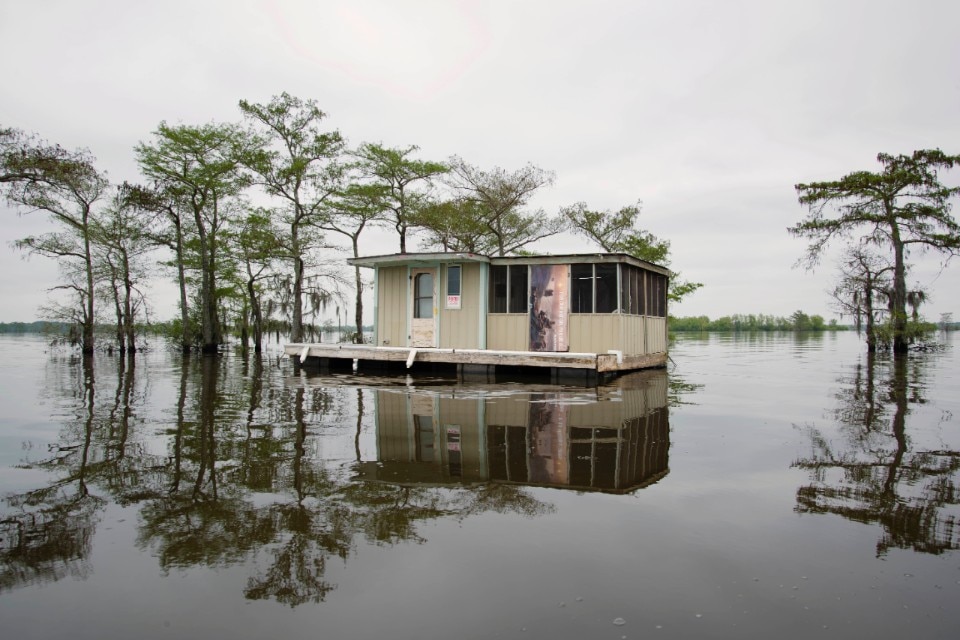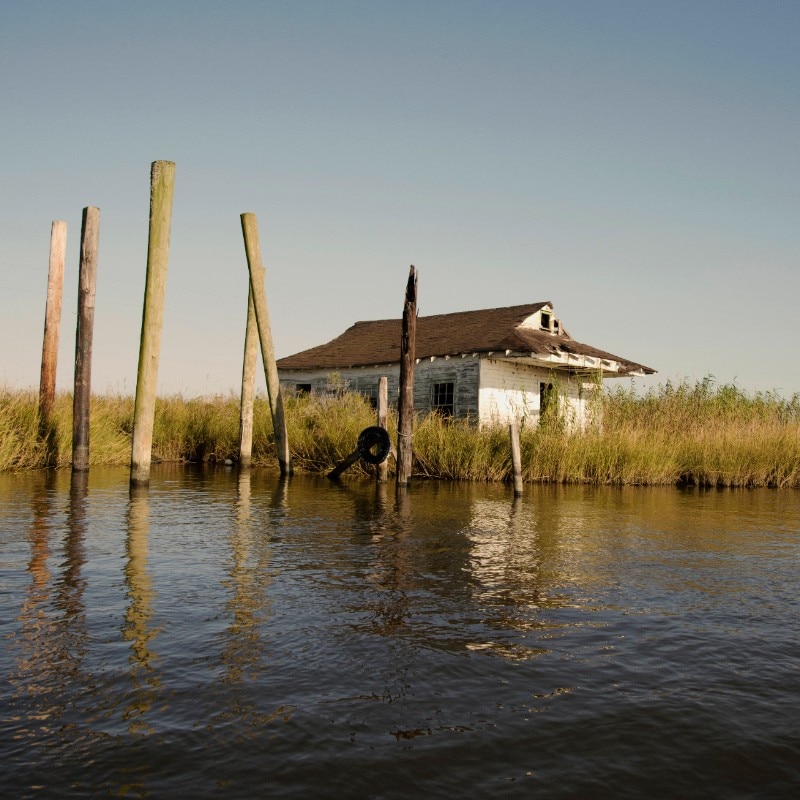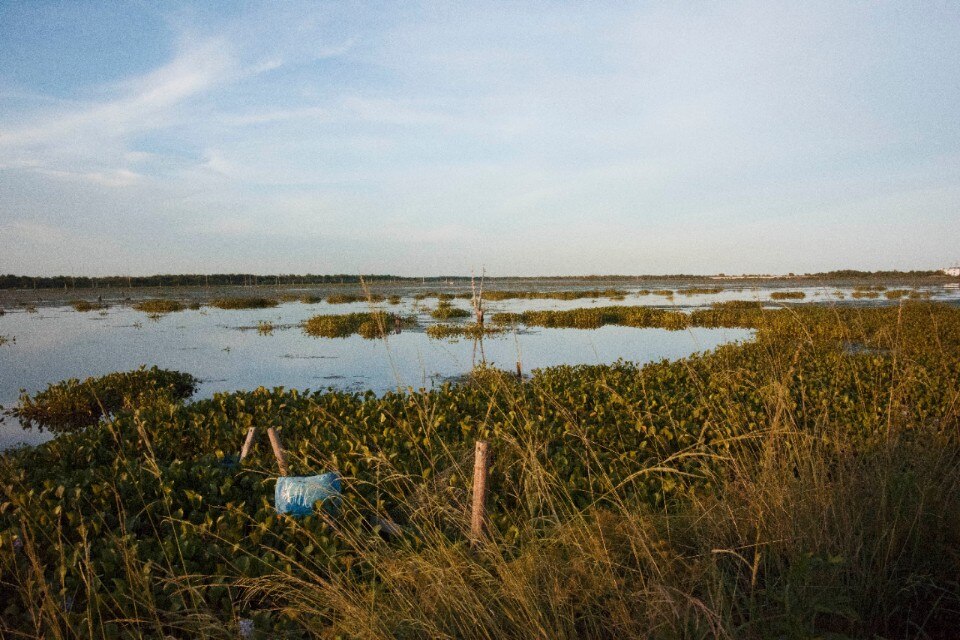Do you recall that vaguely tacky postcard with Technicolor hues that for years and years was placed on your grandparents’ fridge door? “Greeting from Venice”, it said, while a gondola floated in the high tide of San Marco square, tamed by strapping young men with mid-century faces and folklorist straw hats. Within a couple of decades that postcard, though, could look even more dated than it now does, and not simply because of the aesthetic evolution of the gondoliers.
By 50 years' time, experts claim, Venice could already be fully underwater. This is a destiny shared by many other coastal areas across the planet. Two-thirds of the main cities in the world, hosting up to 60% of the global population and some of its most pivotal economic districts, can be found along a coastline. Think, for instance, that 85% of the Australian population lives within 50km from the sea.
The future of the relationship between human settlements and the environment, then, revolves around a discourse requiring a more organic approach. Mostly under discussion are those areas where, in the last 150 years, coastal settlements increased to answer to the necessities of the touring industry. We should therefore question to what extent the claims made by such industry can be harmonised with the protection of coastlines.
In Tunisia, where the construction of coastal resorts dates back to the 1880s, the sea devours the beaches at a speed of more than three metres per year, a total equivalent to five football pitches in the last 130 years according to the studies led by a pool of researchers from the Tunis-Carthage, the Tunis-El Manar and the Southern California universities.

Local economies and subsistence
The collaboration between Tunisian and Californian institutes highlights the global nature of the erosion issue and, mostly, how tourism isn't the only worrying concause. Aside from tourist settlements, also under scrutiny are historical communities that built their subsistence around the fishing industry and naval trades.
The West Coast of the United States, thanks to a climate similar to that of the Hammamet Gulf in Tunisia, has been able to develop a florid economy in the areas of Malibu and Miami. Their fortune is also due to the fact the Pacific Ocean has been extremely clement over the last 100 years, with a sea rising level below the metre. This trend, though, may soon change, meaning that the West Coast could be submerged by the waters by the end of the century. This is the very same issue that New Orleans is currently facing. There the equivalent of a football pitch of land is lost every half an hour.
If rethinking tourism is, by itself, a complicated challenge, even tougher is understanding how to conjugate environmentalism, coastal life and incomes. For instance, in Kenya coastal areas generate up to 60% of the country's GDP, thanks to tourism (45%) and sea trades (15%). A similar pattern can be traced, in addition to the aforementioned American coasts, in Sri Lanka and in China, where the unregulated economic development is among the factors that are contributing to a vertiginous increase of phenomena of erosion. The vast Chinese territory, already undermined by tectonic episodes and adverse climatic conditions, is under further threats of hurricanes and floods as a consequence of global warming, which the restless industrialisation of the country has contributed to.
The Chinese scenarios, after all, are similar to those witnessed on an increasingly regular basis in the rest of the world, where precipitations are progressively turning into potential threats towards human settlements. Think, for example, to the cemetery that recently collapsed into the sea in Camogli, Italy, following the crumble of the cliff it was built on.
Pier Carlo Sandei, United Nations senior advisor in partnership with the EU on nature, climate and energy, highlights the urgency of reconsidering our relationship with nature, stressing the necessity to cut down the anthropologic impact. “When a river floods we have to question ourselves on whether the fault is ours or the river's. These days we tend to accept less than in the past the interference of nature on our civilisation,” explains Sandei, “We should actually learn to live in better harmony with the environment.”
Not only floods and landslides cause material damages, but also the progressive contamination of freshwaters by sea waters with the related threat of causing further microplastic pollution.

The man and structural violence
This issue, hence, leads us to reflect on the concept of structural violence and how it can still be compatible with the areas it has been affecting so far. Can we still build on weakened coastal surfaces making mere speculative selfishness the shield to our actions, especially when lacking precise economic regulations concerning this matter?
If in the past those who speculated on coastal constructions could perhaps lack a long-term outlook because of the still limited popularity of deep ecology outside of restricted academic niches, today the sudden popularity of the discourse is investing citizens with responsibilities anew. The themes close to Extinction Rebellion – to mention the pop tip of a way broader iceberg – may contribute to a more mature consciousness on the issue.
In matters of ecology, The Imperative of Responsibility, the ethics theory coined by Hans Jonas in his 1979 essay bearing the same name, now results more relevant than ever. This responsibility principle – bearing the aim of protecting the human presence on the Earth – stresses individuals to reconsider their actions according to their impact on the planet.
The ecologist commitment preached by Jonas, then, is strongly relevant because transversal, albeit theoretically, to the social and economic status of the population. On a more pragmatic level, in fact, the coastal communities find themselves polarised between pressures of financial nature and long-term ethical visions.
At this point, Sandei explains how these two elements don't necessarily defeat one another. “The investment men should think about isn't just for future generations, but also for themselves. In both historical and non-historical areas, the technologies available to mankind have been wrongly employed for human interests and not for natural ones. The problem comes up when you don't take into account the hidden costs, but you only focus on more immediate profits. It is opportune to first consider all the social and environmental costs, and then to draw the most appropriate conclusions.”

Can a long-term outlook represent a solution?
Julian Feng and Alvin Li – curators of a recent project that conjugates land art and science on the matter of land reappropriation along the Hong Kong coastline – argue that Terraformation, the innovative system that fights erosion back by acting on the climate, is an exclusively temporary solution because it fails to address the issue on a long-term perspective.
Similarly, the same ethical and pragmatical problem was raised in the aftermath of the operation of cloud seeding implemented in Sardinia, Italy, to increase raininess in the region. The human nature of this action, following the action of strong winds, was in fact responsible for unexpected and damaging precipitation on the North African coasts.
After all, the challenge launched by erosion has a subtle nature. It is a matter of racing against time, procrastinating first, and slowing down later a process that has been restlessly fed for decades.
The short-sightedness of temporary solutions also threatens to further aggravate the already precarious situation. Take dams for instance. Although conceived to stem destructive natural phenomena, they can be responsible for further alterations in sedimentation, with the consequent increase of erosion and a detrimental impact on an area's biodiversity. Not to mention their limited lasting, in the case of concrete dams.
As Sandei reiterates: “Imposing our hand on nature does not represent a solution, but simply putting a patch”. Similarly, thinking of moving entire populations inland would do nothing but weigh on the already critical conditions of overpopulation the planet is facing.
The most sensible solutions appear to be those advocating for a progressive and long-term reshaping of coastal socio-economic patterns. This means that rethinking tourist destinations like Venice should also be taken into account.
“A city has to be lived, not exploited. Think about Venice, for instance. Bringing residents back in town can protect the environment because the urban impact is inferior to that caused by tourists. Furthermore, residents would put more effort and care in looking after their environment,” explains Sandei.

Safeguarding coastal communities, therefore, doesn't necessarily mean renouncing social and economic evolution, but being ready to look at the future with better far-sightedness. The citizens of today, even more than those of tomorrow, face the challenge of nurturing their consciousness on the issue in opposition to the materiality of the immediate. To what extent, though, can awareness be the only answer to a fight resulting far from concluded?
Perhaps, the restless pace our society speeds at has subtracted from individuals the patience of understanding, and therefore accepting, the course of events and nature's own pace. We should not, in fact, forget that coasts are meant to change and that maps don't necessarily have to suggest the immutability of geographical features. What we now consider being historical inland spots – or vice-versa coastal destinations – may not have in ancient times.
Opening image: Chalmette Refinery, St. Bernard Parish, Louisiana. Photo: Virginia Hanusik.
Virginia Hanusik is a photographer whose work explores the relationship between architecture and climate change. Her projects have been exhibited internationally and supported by the Pulitzer Center, Graham Foundation, and Mellon Foundation. She lives in New Orleans. You can find Virginia's work on Instagram @ginnyhanusik and Twitter @virginiahanusik.


